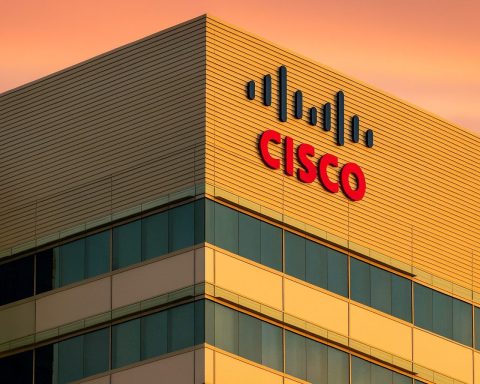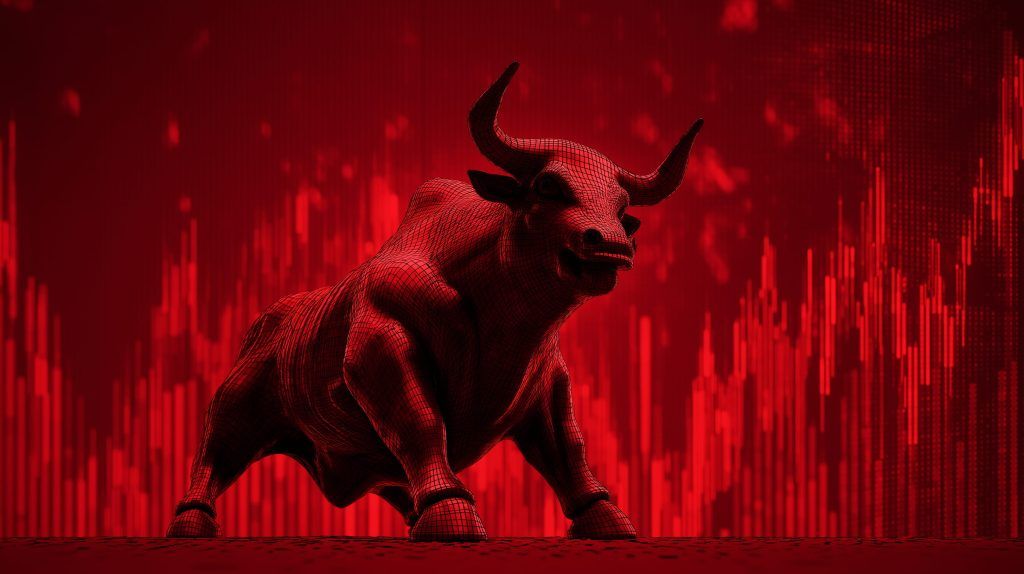Deere & Company (NYSE: DE), the maker of John Deere farm and construction equipment, heads into Tuesday, November 25, 2025 with its stock trading around $487 per share as investors brace for Wednesday’s fiscal Q4 2025 earnings release and guidance for 2026. [1] The shares sit roughly 10% below their 52‑week high near $534 but remain up mid‑teens percentage year‑to‑date, outpacing many industrial peers despite a weakening agricultural cycle. [2]
DE stock today: where things stand before earnings
On Monday, November 24, Deere closed at $487.23, a gain of about 2.6% on the day as traders continued to position ahead of the pre‑Thanksgiving earnings slate. [3] At that level, DE is:
- Up more than 14% in 2025 and over 18% in the last 12 months, according to recent market coverage. [4]
- Roughly 11–12% below its 52‑week high around $533.78 set in mid‑May 2025. [5]
Recent sessions have seen volume fluctuate around the 50‑day average of about 1.3 million shares, pointing to steady, but not speculative, trading interest ahead of the print. [6]
Heading into Tuesday’s session, DE is essentially priced as a “show me” story: investors are giving the company credit for its long‑term automation and precision‑agriculture push, but they also know the current farm and construction equipment cycle is past its peak.
Earnings tomorrow: what Wall Street expects
Deere will report its fiscal fourth‑quarter 2025 results on Wednesday, November 26, 2025, before the U.S. market opens, followed by an earnings call at 9:00 a.m. Central Time (10:00 a.m. ET). [7]
Q4 2025 consensus
Multiple previews and earnings calendars point to the same broad picture for the October quarter: [8]
- EPS: about $3.80–$3.83 per share, down from roughly $4.55 in Q4 2024.
- Revenue: around $9.8–$9.81 billion, implying mid‑single‑digit percentage growth year over year.
In other words, analysts are braced for lower profits but modestly higher sales, as pricing and mix help offset lower volumes in key markets.
Full‑year 2025 expectations
For the full fiscal year 2025, consensus estimates cluster around: [9]
- EPS: roughly $18.4–$18.6,
- down about 27% from fiscal 2024’s ~$25.6 per share.
That drop reflects a sharp step down from the boom years of 2021–2023, when high commodity prices and tight equipment supply pushed margins and earnings to record levels.
Management has already tightened its net income outlook for fiscal 2025 to roughly $4.75–$5.25 billion and flagged an estimated $600 million pre‑tax hit from new tariffs, about half of which had flowed through the P&L by the end of Q3. [10]
A quick look back at Q3
In August, Deere’s Q3 2025 report highlighted how the cycle has cooled:
- Net income fell to about $1.29 billion (EPS $4.75) from $1.73 billion (EPS $6.29) a year earlier.
- Net sales declined roughly 9% year‑on‑year to about $10.3–$12.0 billion depending on the metric used. [11]
Even so, Deere beat Wall Street estimates on both revenue and EPS and maintained robust double‑digit operating margins, which reassured investors that the company can manage through a downturn. [12]
Going into tomorrow’s call, investors will be listening for:
- How Q4 margins held up under pricing pressure and tariffs.
- The order backdrop in Production & Precision Ag, Small Ag & Turf, and Construction & Forestry. [13]
- Early color on 2026 demand and any signs that the earnings down‑cycle is nearing a bottom. [14]
A complicated backdrop: soft farmer sentiment and a cooler machinery cycle
Deere’s earnings are being shaped as much by the farm economy as by its own execution.
Farmer sentiment is subdued
A Purdue University/CME Group survey cited in recent pre‑earnings coverage shows farmer sentiment near a 12‑month low, as producers grapple with record‑high corn and soybean yields pressuring crop prices and crimping confidence. [15] Lower grain prices typically make farmers more cautious about big‑ticket equipment purchases, particularly after several years of strong spending.
Inventories and used equipment signal a reset
On the manufacturing side, an analysis of U.S. Census Bureau data finds that farm machinery and equipment inventories peaked around $7.23 billion in October 2022, then dropped to about $5.65 billion by July 2025—a roughly 22% decline as OEMs and dealers worked down elevated stock. [16]
At the same time, the used equipment market looks quieter than usual. A recent year‑end machinery outlook from Successful Farming notes that the volume of large equipment moving through auctions in 2025 is significantly lower than in 2024, even as older, simpler tractors and high‑horsepower units remain in strong demand and often hold value well. [17]
For Deere, this mix of:
- cautious farmers,
- leaner dealer inventories, and
- a slower auction channel
helps explain why fiscal 2025 sales and earnings are down from the peak years even though the company is still generating healthy margins and free cash flow. [18]
Smart Industrial strategy, automation and sustainability
Despite cyclical headwinds, Deere continues to invest aggressively in technology, automation, and recurring services—key pillars of its Smart Industrial Strategy.
Leadership reshuffle to push “connected machines”
On September 2, 2025, Deere announced a series of leadership changes aimed at accelerating this strategy. New role assignments put additional emphasis on lifecycle solutions, supply management, and customer success, including a dedicated leader responsible for global aftermarket, precision upgrades, and business transformation. [19] The company framed these moves as part of its push to deliver “intelligent, connected machines and solutions that enhance customer economic value.” [20]
See & Spray: 5 million acres and counting
One headline initiative is See & Spray, Deere’s targeted spraying technology. In early November, the company reported that See & Spray had been used across more than five million acres of farmland in the 2025 growing season—an area larger than the state of New Jersey. [21]
According to Deere and industry publications, growers using See & Spray in 2025:
- cut non‑residual herbicide use by nearly 50% on average, and
- saved close to 31 million gallons of herbicide mix, even in a year of elevated weed pressure and frequent rains. [22]
That combination of cost savings and sustainability benefits is central to Deere’s pitch that its machines are becoming software‑ and data‑driven platforms rather than purely mechanical assets.
GUSS and autonomous equipment
Deere has also moved to deepen its autonomy offerings. In September, it finalized the full acquisition of GUSS Automation, a California‑based producer of unmanned sprayers used in orchards and vineyards, building on a joint venture established in 2022. [23]
Earlier in 2025, the company used the CES trade show to showcase new autonomous tractors, a driverless dump truck, and a battery‑electric commercial mower, all featuring computer vision, AI and multi‑camera systems designed to address labor shortages in agriculture and construction. [24]
These moves support a longer‑term narrative that Deere is evolving from a cyclical manufacturer into a higher‑margin industrial technology platform with a growing base of software, connectivity and precision‑ag services layered on top of its iron. [25]
Analyst sentiment and valuation: cautiously optimistic
Despite the near‑term downturn in earnings, Wall Street’s stance on DE is broadly constructive.
Ratings and price targets
Across several aggregators, Deere carries a consensus rating around “Buy” / “Overweight”:
- Average 12‑month price targets cluster in the low‑to‑mid $520s, implying 6–8% upside from the ~$487 share price. [26]
- Target ranges are wide: roughly $440–$460 on the low end to about $600+ on the high end, underscoring uncertainty about how quickly the next up‑cycle will unfold. [27]
Recent analyst moves highlight that split view:
- J.P. Morgan trimmed its target to $480 and maintained a Neutral rating, citing sector‑wide tariff and cycle risks. [28]
- UBS upgraded Deere to Buy and set a $535 target, arguing that 2026 will likely mark the last year of the earnings downturn before a recovery in 2027. [29]
- Other firms, including Wells Fargo, RBC and DA Davidson, have emphasized Deere’s technology leadership and long‑term automation story, with some targets in the $540–$580 range. [30]
Multiples and dividend
On consensus forecasts compiled by MarketScreener, Deere currently trades at about 26× projected fiscal‑2025 earnings, with a forward dividend yield of roughly 1.3%. [31] That yield is based on the company’s $1.62 quarterly dividend, which has been held steady since early 2024 and lifted from $1.47 in 2023. [32]
Some valuation models see room for more upside: a recent discounted‑cash‑flow analysis from Simply Wall St estimates DE shares are trading at roughly a 40% discount to intrinsic value, assuming double‑digit annual EPS growth as the cycle normalizes and high‑margin precision‑ag revenues expand. [33]
Others are more skeptical. Several commentators—particularly earlier in the year—have argued that DE still looks expensive for a cyclical stock facing slowing growth, tariff whiplash, and continued legal and regulatory scrutiny, including “right to repair” lawsuits over farmers’ access to diagnostic software. [34]
What to watch in today’s trading and tomorrow’s call
For traders and longer‑term investors watching DE around the Q4 report, a few themes are likely to drive the stock’s next move:
- 2026 guidance and cycle timing
- UBS and other analysts have suggested 2026 could be the final year of Deere’s earnings down‑cycle, setting up a rebound into 2027. [35]
- If management issues 2026 guidance above cautious sell‑side expectations, the stock could see a relief rally; a more conservative outlook may reinforce the idea that the trough is still ahead.
- Precision agriculture and subscription traction
- Investors will want updated metrics on precision‑ag subscriptions, retrofit kits, and software attach rates, especially around See & Spray and other automation tools. [36]
- Commentary that supports the view of Deere as a recurring‑revenue tech platform could justify its mid‑20s earnings multiple even in a down year.
- Tariffs, pricing and margins
- Deere has estimated $600 million in tariff‑related costs for the current fiscal year and has already recognized about half of that. [37]
- Investors will be watching how much of those costs Deere can pass through via pricing and mix without eroding demand, and whether management expects further tariff escalation in 2026.
- Capital allocation and balance sheet
- With strong free cash flow historically and a modest dividend payout ratio, Deere has room to balance dividends, buybacks and R&D/automation investments. [38]
- Any change in capital return priorities—particularly buyback pace—could influence how the market values the stock.
- Regulatory and “right to repair” developments
- Ongoing litigation and regulatory scrutiny over repair restrictions remain a long‑tail risk. [39]
- Signals that Deere is moving toward more flexible repair policies, or that legal risk is easing, would likely be welcomed by both farmers and ESG‑minded investors.
Bottom line
As of November 25, 2025, Deere & Company (DE) enters its Q4 earnings week with:
- a share price around $487,
- earnings down sharply from peak levels but still supported by strong margins, and
- a long‑term strategy rooted in automation, sustainability, and recurring precision‑ag revenue. [40]
In the very short term, the stock’s direction will hinge on tomorrow’s numbers and guidance—particularly how management frames 2026 demand and margin prospects. Over a longer horizon, DE’s investment case increasingly rests on whether John Deere can continue transforming from a cyclical equipment manufacturer into a data‑driven industrial technology platform that earns higher and more resilient returns through each cycle.
Either way, volatility around the earnings print is likely, and—as always—any decision to buy, hold, or sell DE should be based on your own risk tolerance, time horizon, and financial situation. This article is for informational purposes only and is not financial advice.
References
1. fintel.io, 2. www.marketwatch.com, 3. fintel.io, 4. newsable.asianetnews.com, 5. www.marketwatch.com, 6. www.marketwatch.com, 7. investor.deere.com, 8. longbridge.com, 9. www.rcmcoop.com, 10. longbridge.com, 11. longbridge.com, 12. www.marketbeat.com, 13. www.wsj.com, 14. www.investing.com, 15. newsable.asianetnews.com, 16. farmdocdaily.illinois.edu, 17. www.agriculture.com, 18. www.investopedia.com, 19. www.prnewswire.com, 20. www.prnewswire.com, 21. www.croplife.com, 22. www.croplife.com, 23. www.farmprogress.com, 24. www.reuters.com, 25. simplywall.st, 26. finance.yahoo.com, 27. www.marketbeat.com, 28. www.gurufocus.com, 29. www.investing.com, 30. www.investing.com, 31. www.marketscreener.com, 32. www.marketscreener.com, 33. simplywall.st, 34. seekingalpha.com, 35. www.investing.com, 36. newsable.asianetnews.com, 37. newsable.asianetnews.com, 38. www.marketscreener.com, 39. www.myjournalcourier.com, 40. www.marketbeat.com







